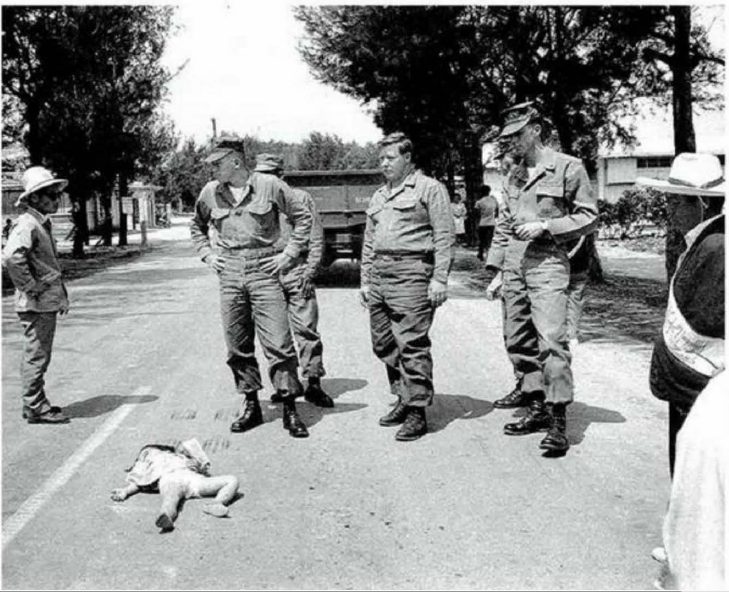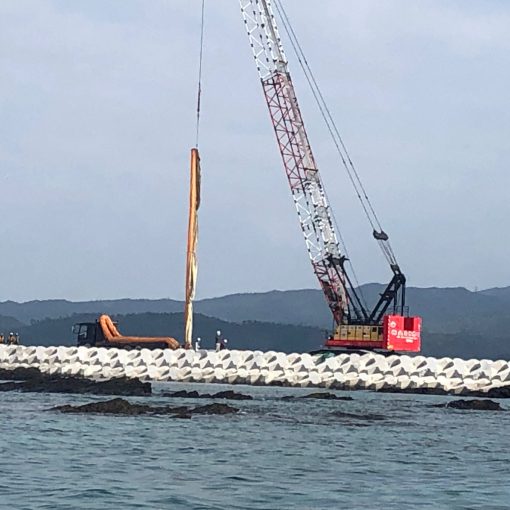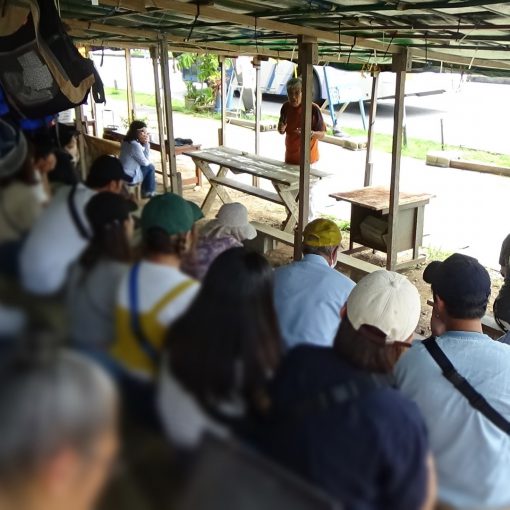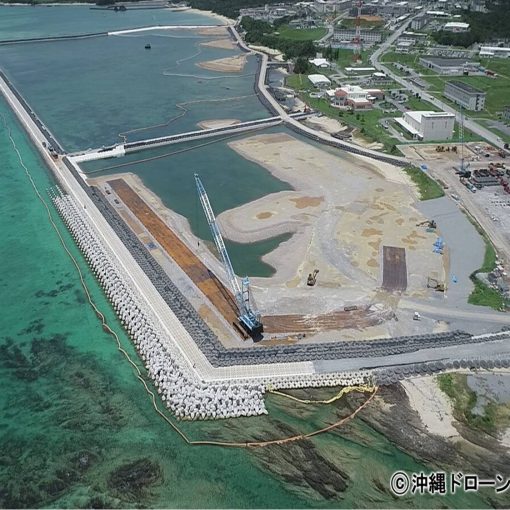A picture taken in Okinawa shocked the people in mainland Japan. The photo of “a girl run over” quickly spread through the media. A news photographer, Kyōko Ureshino, took the photo. She was in Okinawa at that time and was sure that she would be killed if the U.S. military identified her as the picture’s photographer.
In 1965, Okinawa was still under the United States jurisdiction, which was about to begin armed intervention to Vietnam. In Okinawa, the movement to return to the sovereignty of Japan was getting stronger day by day. Ms. Ureshino decided to visit Okinawa to record the return-to-Japan activity. When she arrived at Ginoza Village on Apr 20 with a group of marchers to facilitate return to Japan, the accident happened.
Jerked by a cry, “A child got killed! By a car!” Ms. Ureshino stepped out of the group and saw a little girl collapsed on the public road while still holding on to her bag full of school supplies. It was instant death. She also saw some local Japanese policemen talking to several large U.S. soldiers standing and looking down at the girl. To her surprise, the policemen did not arrest the soldiers on the accident scene. But they began to direct the traffic for the U.S. military vehicles to proceed. It was the reality of Okinawa that she witnessed. When she tried to take the accident pictures, the marching group members stopped her, “If a U.S. soldier sees you taking pictures, you will be dead.”But she insisted that she give her life for a picture that shows the reality, and the group members agreed for her to take one photograph over the marchers’ shoulder.
The picture received a tremendous response when it was published in the newspaper and helped spread Okinawa’s real situation.
Even today, not much has changed: the Japan-U.S. Status of Forces Agreement is still in place, and Japan’s justice administration does not take a firm attitude against the crimes and accidents committed by the U.S. soldiers. The message captured by this picture continues to hold the truth in the present days.

(In front of the Camp Schwab Gate)
Amidst the pouring rain, nearly 20 protesters participated in the sit-in. Deliveries of the landfill materials by concrete mixing trucks and other trucks were made in three rounds from the morning through the afternoon.

(On the sea at the Oura Bay)
Two vessels and eight canoes went out on the sea. They shouted messages like “you destroy the ocean” and “stop the illegal construction work” towards four cargo ships that one by one arrived at the Oura Bay.
When the canoes approached a pontoon reaching the K8, the Japan Coast Guard surrounded them all at once and brought them back to the shore within 30 minutes.

(Ryukyu Cement Awa Pier)
The sun was bright as usual. About 20 people divided themselves to protest at the pier’s entrance and exit against the dump trucks coming continuously throughout a lunch break. The protestors wave at the drivers of the ordinary cars and buses going by the pier, who often honk to the protestors to show their support.Today’s loading operation finished one hour earlier than usual. A total of 849 truckloads of the earth and sand were loaded to three cargo ships.


(Motobu Shiokawa Pier)
Several members of the Shimagumi from Motobu chapter rallied in protest. There was no sign of the police. A total of 514 truckloads of the earth and sand were transferred onto four cargo ships that departed for Henoko.
Number of dump trucks to date and percentage against the total
The estimation calculated on the basis of the number of ruckloads serves only as a reference.
Number of dump trucks which made delivery from December 2018 to the end of December 2019 114,601(1.39%)
| 12(Sat) | 14(Mon) | 15(Tue) | 16(Wed) | 17(Thr) | 18(Fri) | |
| Awa | 665 | 592 | 530 | 773 | 718 | 849 |
| Shiokawa | 0 | 510 | 512 | 511 | 516 | 514 |
| Number of dump trucks ※ |
Weightt of earth/sand
※① |
Converted to volume
※② |
Volume per Total
※③ |
| 244,034 | 1,220,170t | 610,085㎥ | 3.020% |
※ Cumulative since Dec. 1, 2019
※① Calculated by assuming that the average truckload per dump truck would be 5 tons
※② Calculated by assuming that a specific weight of soil/sand set to be 2
※③ Percentage against 20.200.000m3, the total volume of earth and sand required for the landfill.





